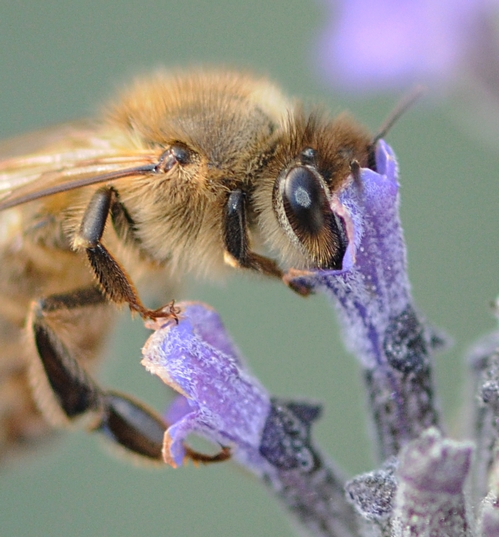Ever wonder how a honey bee sees?
Its compound eyes are comprised of hundreds of single eyes (ommatidia), each with its own lens. It can distinguish colors, but can't see red, which it interprets as black.
Honey bees can even recognize human faces, according to a December 2005 article in the Journal of Experimental Biology. University of Cambridge scientists did a Pavlov-dog type experiment, in which they showed bees black-and-white photos of human faces. They trained the bees to recognize faces with a reward (sugar syrup) or a bitter quinine solution (punishment). In ensuing tests, the researchers took away the rewards and punishment. Result: the bees made a beeline for the "reward faces" 80 to 90 percent of the time.
If you want to see how bees see, check out scientist-artist Andy Giger's Web site, B-Eye. "There are differences between the bee's view of the world and ours," he says. "The bee has a lot fewer ommatidia than we have photoreceptors, and they are not evenly spaced."
B-Eye, Giger says, "ignores most of these differences, simulating just the optics of the honey bee's compound eyes. It shows what a bee would see of a flat image, with the bee facing straight at the plane of the image."
Seeing is bee-lieving.
Attached Images:

Bee Eyes

Excellent Eyesight